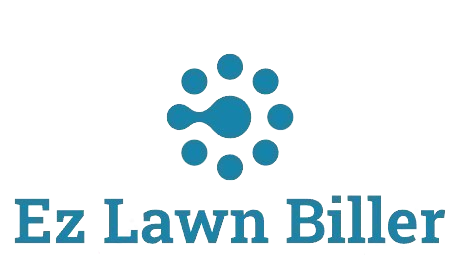Analyzing performance in your lawn business can seem daunting, but with the right approach, it becomes a manageable task that can significantly improve your operations.
Step-by-Step: How to Analyze Performance in Your Lawn Business
In the competitive world of lawn care, understanding your business’s performance is crucial for growth and sustainability. This blog post will guide you through a comprehensive step-by-step analysis of your lawn business’s performance. We will cover important metrics to track, tools to utilize, and strategies to implement, empowering you to make informed decisions for your company’s success.
In the lawn care industry, performance analysis is about more than just tracking revenue; it encompasses evaluating customer satisfaction, service efficiency, and marketing effectiveness. By systematically analyzing these areas, business owners can identify strengths, weaknesses, and opportunities for improvement. This in-depth exploration will provide you with the tools you need to enhance your business operations and drive growth.
As we navigate this topic, we’ll not only discuss the theoretical aspects of performance analysis, but also offer practical tips and tools, such as the benefits of using software like EZ Lawn Biller, to streamline your operations. Let’s dive in!
Understanding Key Performance Indicators (KPIs)
The first step in analyzing your lawn business’s performance is identifying the key performance indicators (KPIs) that align with your goals. KPIs are quantifiable measurements that reflect the critical success factors of your business. For lawn care companies, relevant KPIs might include customer retention rates, average job completion time, and revenue per service.
For example, if your customer retention rate is low, it may indicate issues with service quality or customer satisfaction. By analyzing feedback and service records, you can pinpoint areas needing improvement. According to industry research, businesses that actively monitor their KPIs see a 20% increase in overall efficiency. This shows how crucial it is to keep a close eye on these metrics.
Utilizing Technology for Data Collection
Once you’ve established your KPIs, the next step is to collect data effectively. Utilizing technology is key here. Tools like EZ Lawn Biller can automate data collection, allowing you to focus on analysis rather than paperwork. Such software tracks every job, invoice, and client interaction, providing real-time insights into your business performance.
Incorporating mobile apps can also enhance your data collection efforts. Field service management apps allow your technicians to log services performed, efficient routing, and customer feedback directly from their mobile devices. This not only streamlines communication but also helps in gathering accurate data that’s essential for performance analysis.
Analyzing Financial Performance
Your financial performance is a critical aspect of your business that requires careful analysis. Regularly reviewing your income statements, balance sheets, and cash flow statements can provide valuable insights into your business’s financial health. By comparing revenues against costs, you can identify areas where you can cut expenses or increase pricing.
For instance, if you notice that your expense ratio is rising, it’s crucial to investigate the reasons behind this. Do you have outdated equipment that requires frequent repairs? Are your supply costs increasing? Identifying these trends early on can help you make proactive adjustments. Additionally, leveraging accounting software can simplify this process, allowing you to generate reports that highlight key financial metrics at the click of a button.
Evaluating Customer Satisfaction
Customer satisfaction is a cornerstone of success in the lawn care industry. Happy customers are more likely to become repeat clients and refer your services to others. To gauge customer satisfaction, consider conducting surveys or soliciting feedback after each service. Questions may include ratings on service quality, timeliness, and overall experience.
Using tools like online survey platforms can help you gather and analyze this data efficiently. By regularly reviewing this feedback, you can uncover patterns and areas for improvement. For example, if multiple clients note that your team arrived late, this could indicate a need for better scheduling. Addressing these issues proactively can significantly enhance customer loyalty and retention.
Assessing Workforce Efficiency
Your workforce is a significant factor in your business’s success. Evaluating workforce efficiency involves examining how effectively your team completes jobs and how well they adhere to schedules. Tracking metrics such as average job completion time, employee productivity rates, and overtime hours can give you insights into your team’s performance.
Implementing a performance management system can help you monitor these metrics in real-time. For example, if you find that certain employees consistently complete jobs faster than others, it might be worth investigating their techniques or providing coaching to others. This approach not only boosts efficiency but also fosters a culture of continuous improvement within your team.
Marketing Performance Analysis
In today’s digital age, effective marketing is crucial for attracting new customers and retaining existing ones. Analyzing your marketing performance involves reviewing the effectiveness of various channels—be it social media, email campaigns, or local advertising. By tracking metrics like lead conversion rates and customer acquisition costs, you can determine which marketing strategies yield the best results.
Tools such as Google Analytics can provide insights into your website’s performance, including traffic sources and user behavior. If you find that social media ads are generating significant leads, it may be worth investing more in that area. Conversely, if print ads aren’t converting, you might consider reallocating that budget elsewhere. Understanding where to focus your marketing efforts can lead to better ROI and more customers.
Leveraging Reporting and Analytics Tools
To make informed decisions based on your analysis, it’s essential to leverage reporting and analytics tools effectively. Many software solutions, including EZ Lawn Biller, offer detailed reporting features that can help you visualize your business performance over time. These reports can highlight trends, allowing you to anticipate future performance and adjust your strategies accordingly.
For instance, if data shows that your most profitable services are lawn fertilization and aeration, you might consider focusing your marketing efforts on promoting these services more aggressively. Reports can also help you identify seasonal trends, allowing for better planning and resource allocation.
Setting Actionable Goals Based on Analysis
After conducting a thorough performance analysis, the next step is to set actionable goals based on your findings. Goals should be SMART—Specific, Measurable, Achievable, Relevant, and Time-bound. For example, if your analysis indicates a need to improve customer retention, a goal might be to increase retention rates by 15% over the next year.
Setting clear goals not only provides direction but also motivates your team to strive for improvement. By regularly reviewing these goals and adjusting them based on ongoing analysis, you can create a dynamic environment that encourages growth and adaptability.
Implementing Changes and Measuring Results
Once you’ve set your goals, it’s time to implement changes in your operations based on your analysis. This could involve adjusting your service offerings, enhancing your marketing strategies, or providing additional training for your staff. The key is to monitor the impact of these changes closely.
Utilizing performance metrics will allow you to evaluate whether the changes are having the desired effect. For example, if you implement new marketing strategies, tracking lead conversion rates and customer feedback will help you assess effectiveness. This continuous loop of analysis, action, and assessment will enable you to refine your processes further and drive growth.
Creating a Culture of Continuous Improvement
Finally, fostering a culture of continuous improvement within your lawn business is vital for long-term success. Encourage your team to share ideas for enhancing operations and customer service. Regularly revisit your KPIs and performance metrics to ensure they remain relevant and reflective of your business goals.
By engaging your team in the analysis process, you’ll cultivate a sense of ownership and accountability among your employees. This collaborative approach not only drives performance but also enhances job satisfaction, leading to lower turnover rates and a more cohesive work environment.
Conclusion
In conclusion, analyzing performance in your lawn business is a multifaceted process that requires attention to key metrics, effective data collection, and a commitment to continuous improvement. By leveraging technology, assessing customer satisfaction, evaluating workforce efficiency, and analyzing marketing performance, you can gain valuable insights that drive your business forward.
As you embark on this journey, remember that the tools you choose, such as EZ Lawn Biller, can significantly enhance your capabilities and streamline your operations. Set clear goals based on your analysis, implement necessary changes, and foster a culture of improvement to ensure your lawn business thrives in a competitive market.
Ultimately, the key to success lies in your ability to adapt and grow based on the insights you gather. By prioritizing performance analysis, you’re not just aiming for short-term gains, but also building a foundation for long-term success and sustainability in your lawn care business.




